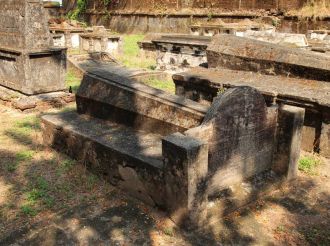
Fort Kochi - Johannes van Blankenberg (1749-1794)
Johannes van Blankenberg was born on May 18, 1749 in Nieuwvliet in Zeeuws-Vlaanderen as son of Johanna Boone and Jannis van Blankenberg. In India he probably married in 1779, aged 30, the fourteen-year-old Anna Helena Daimichen, daughter of Johan Andreas Daimichen and Pasquelle Lucas Smit. They had a daughter, Johanna Susanna, baptized in Kochi in July 1786.
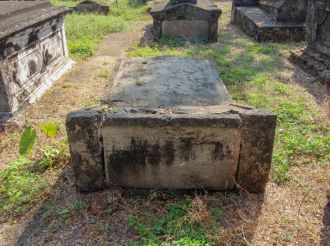
Fort Kochi - Dorothea Lambertina Zeijsig (1774-1800)
Dorothea's date of birth and death is only known from her tombstone at the Dutch cemetery in Kochi. She was born 6 November 1774 and died 10 November 1800. She was only 26 years and 4 days old at the time. From the fragmentary preserved baptism and marriage records of Kochi we know that she was baptized in November 1774 as the daughter of Jeremias Zeijsig[i] and Cornelia Elisabeth van der Weijden. The baptismal witnesses were Jan Lambertus van Spall and Maria Margaretha Prins. Dorothea had an older sister named Cornelia Ernestina. She was born and baptized in November or December 1770.[ii]
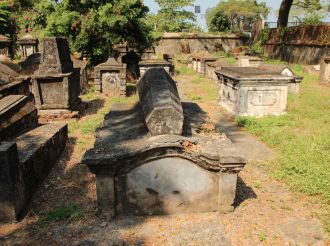
Fort Kochi - Johan Daimichen (1728-1784)
The German Johan Daimichen had already made a long journey before he arrived in Amsterdam from Lubeck and probably fell into the hands of crimps of the VOC. With a debt of 150 guilders to a certain M. Meijers, he was registered as Johan Andreas Deijmiche on 28 April 1751 by the bookkeeper of the VOC.
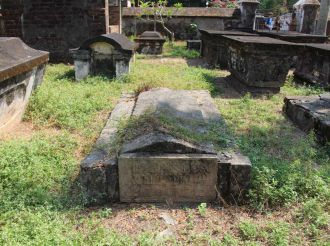
Fort Kochi - Johan Adam Cellarius (1740-1796)
When the Oosthuizen, a ship of the Hoorn chamber, leaves the Texel roadstead on 19 May 1762, this also means a definitive farewell to Europe for the man who appears in the pay book as Corporal Jan Adam Zelarius. He was born in 1740 as the son of Johan Jacob Cellarius and Maria Miller from Olm (Ulm), in present-day Germany.[i] Correct spelling of name and place of birth, even if a false identity was given, was important because the salary records were kept in the pay book during the entire service period. That Cellarius was aware of this is apparent from the fact that he wrote a letter to the Hoorn room in which he confirmed the correct spelling of his name and place of birth. A wise decision, because Cellarius had his annual pay statement collected by authorized representatives. In this way, his entire earnings over all those years could be used from Dutch trading houses to invest more than 10,000 guilders in real estate in Ulm (Germany) and in trading contacts in Europe.
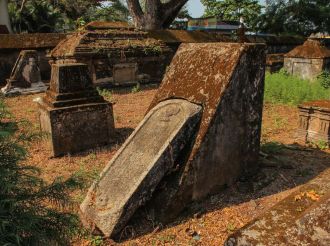
Fort Kochi - Cornelia Elisabeth Vogt (1784-1804)
Cornelia Elisabeth Vogt was born on 29 October 1784 in Kochi as daughter of the ‘vuurwerker’[i] Johan Hendrik Vogt from Nassau in Germany and Augustina Johanna Claassens.[ii] On 7 November she was christened with Johan Gustaaf Claassens and Maria Verhulst as witnesses. She would become the second wife of Carl Philip von Ochsee, from Ixheim in Germany.
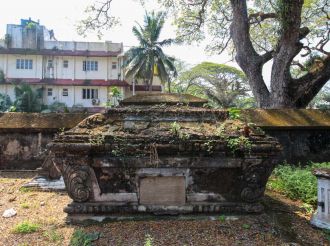
Fort Kochi - Aletta Augustina Thiel (1760-1784)
The lives of VOC women are hardly described and difficult to reconstruct. Only based on the information about their fathers and husbands is it possible to give some insight into their lives. For example, in Kochi Aletta Augustina Thiel is buried. We only know her date of birth and death because of the inscription on her tomb: Born 21 April 1760 and died 30 November 1784. So, she was only 24 and a half years old, and she was the wife of Jan Lambertus van Spall, a junior merchant from Utrecht (the Netherlands) who worked his way up to be the last Dutch governor of Kochi. He served as governor between 1793 and 1795.
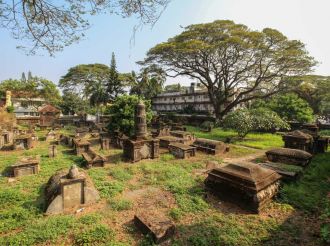
Fort Kochi - Dutch Cemetery
Close to Fort Kochi's former bastion Gelderland the Dutch Cemetery is located, a silent testimony to the Dutch presence in this coastal town. In 1663, the Dutch took what was then Fort Manuel, built by the Portuguese. The original fort was considerably reduced in size by the Dutch for cost reasons and they also made the necessary adjustments within the fort. St. Francis Church was used by the Dutch for Protestant worship, while other Portuguese churches were demolished. The Santa Cruz Cathedral was even converted into a warehouse.
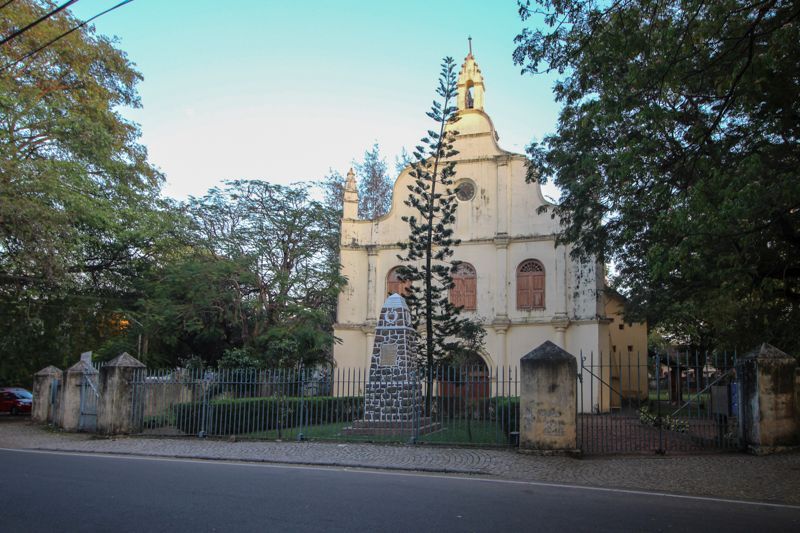
Fort Kochi - St Francis Church
According to oral tradition, it was the apostle Thomas who introduced Christianity to India in AD 52.[1] Today, the Mar Thoma Christians, the Christians of Saint Thomas (also called Thomas Christians), still live along the coast of Malabar. They belong to the churches of the Assyrian tradition, of which Saint Thomas is said to have been the founder in India.[2] These Assyrian Christians speak Syriac, a dialect of Aramaic, the language that Jesus spoke. Their churches are simple, with hardly any furniture and where the community sits on floor mats, like in Hindu temples.
IIndia was not an unknown country for the people of the Levant. According to legend, the first Jews settled in the kingdom of Cochin during the time of Israel's King Solomon, but a much larger group of Jews did not come to India until after the destruction of the Temple in Jerusalem in AD 70. They settled in Cranganore.[3]
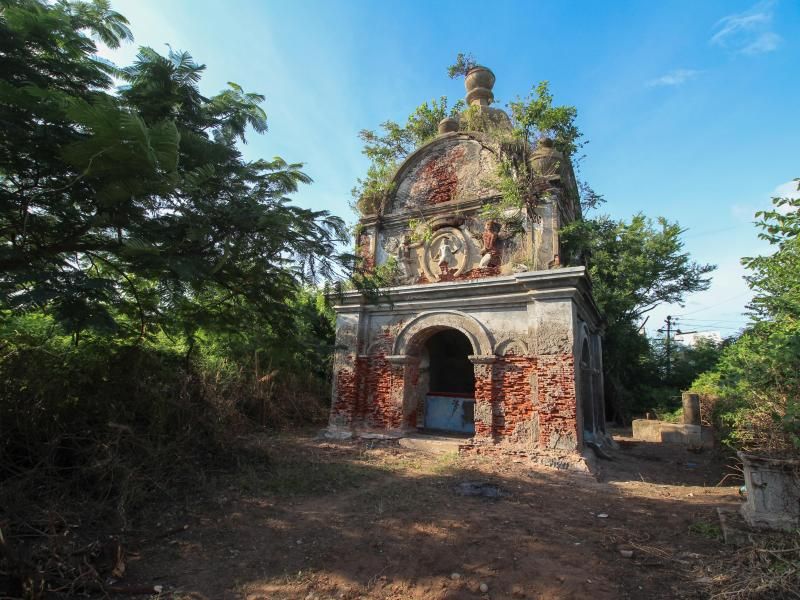
Nagapattinam - Short introduction to Karikop
Not long after the Dutch conquered the fort at Nagapattinam from the Portuguese in 1665, a new cemetery was put into use, further inland. The cemetery is known today as "karikop", a corruption of the Dutch word "kerkhof", meaning churchyard.
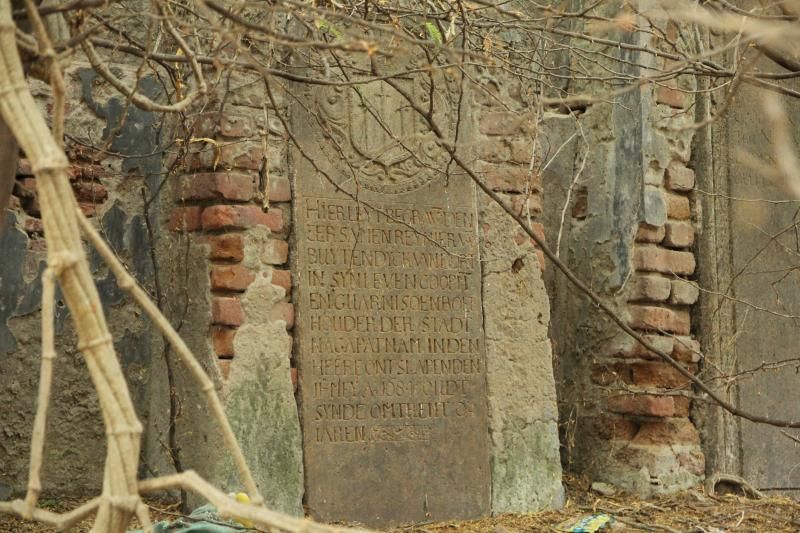
Nagapattinam - Old Cemetery
In 1658 the VOC captured the Portuguese fort at Nagapattinam. In addition to textiles, the VOC traded in Nagapattinam also in elephants, which were caught in Ceylon and sold here to Indian rulers. However, the fort was large and therefore too expensive to maintain. After it was decided in 1687 to move the Coromandel headquarters from Pulicat to Nagapattinam, construction began on a new and smaller fortress, the "Vijf Sinnen". Remnants of the houses and walls that had been destroyed in a great tidal wave in 1680 were used for the construction. In 1781 Nagapattinam was captured by the British and the Dutch trade went back to Pulicat. Nagapattinam would then remain in British possession.
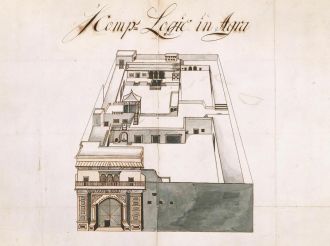
Agra - Remains of the Dutch Garden
In 1621 the VOC established a factory in Agra. The first head of the local VOC lodge was Wouter Heuten, who died in 1623 and was probably buried in the garden. Even though the Dutch were not on good terms with the English, they did offer them the opportunity to bury their dead in the garden of the Dutch lodge. The English had a factory in Agra, but no garden. It is believed that in the mid-nineteenth century, well after the departure of the Dutch from Agra in 1720, the St. Pauls Church was built on the site of the Dutch garden. In addition, a Protestant cemetery was created.
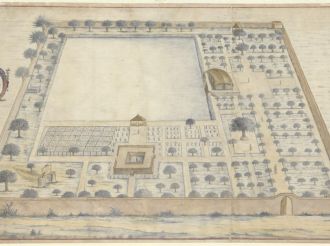
Chhapra - ‘Scomp:s thuyn’
Saltpetre, an important raw material for gunpowder, was extracted nearby the cities of Patna and Chhapra. Opium was also traded. The VOC establishment in Chhapra was established around 1650, not long after the establishment in Patna. The Chhapra branch soon became more important and eventually housed all the Dutch staff. In addition to a living area, the lodge of the VOC consisted of a saltpetre factory and a garden.
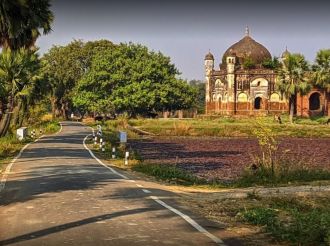
Chhapra - Remains of the Cemetery
Around 1670 the VOC factory in Patna was run by a Banya, a local merchant. The factory in Chhapra became more important and it was home to many Dutch personnel. Initially burials were done in the garden (SC-IND-004), but presumably because of the high mortality, a Dutch cemetery was built just outside Chhapra near Karinga.
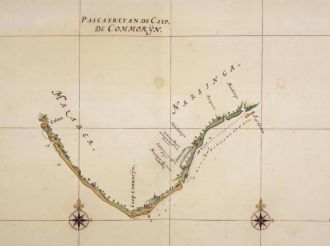
Cape Comorin - A single slab
J.J. Cotton mentions in his List of inscriptions on tombs or monuments in Madras Volume I (Revised edition 1945, p. 185) a hefty granite slab (9 feet by 3 ½) located at the entrance of St. Mary's Church in Cape Comorin and originating from an adjacent cemetery. A Dutch factory would previously have been located on the site.
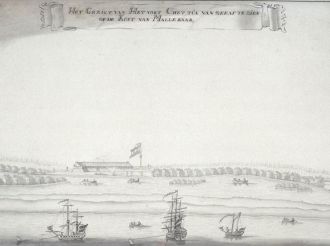
Chetwai - Search for a single slab
In 1714, with the help of local rulers and permission from the kingdom of Kochi, the VOC had a fort built at Chetwai.[1]
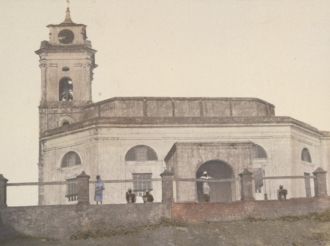
Hooghly - Funerary hatchments
In 1742, Jan Albert Sichterman, VOC director of Bengal, had a clock tower built on the banks of the Hooghly, after he had already decided to fortify the factory. In 1767, George Lodewijk Vernet, then director of Bengal, had an octagonal church built adjacent to the tower.
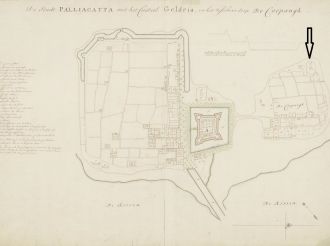
Pulicat - Buitenkerkhof
Pulicat is nowadays a small fishing village on the Coromandel Coast, consisting of two connected islands. In the Chola Empire, a Tamil dynasty from the second to the thirteenth century in southern India, Pulicat developed into an important port. Later, from the fourteenth century, Pulicat became part of the kingdom of Vijayanagara.


